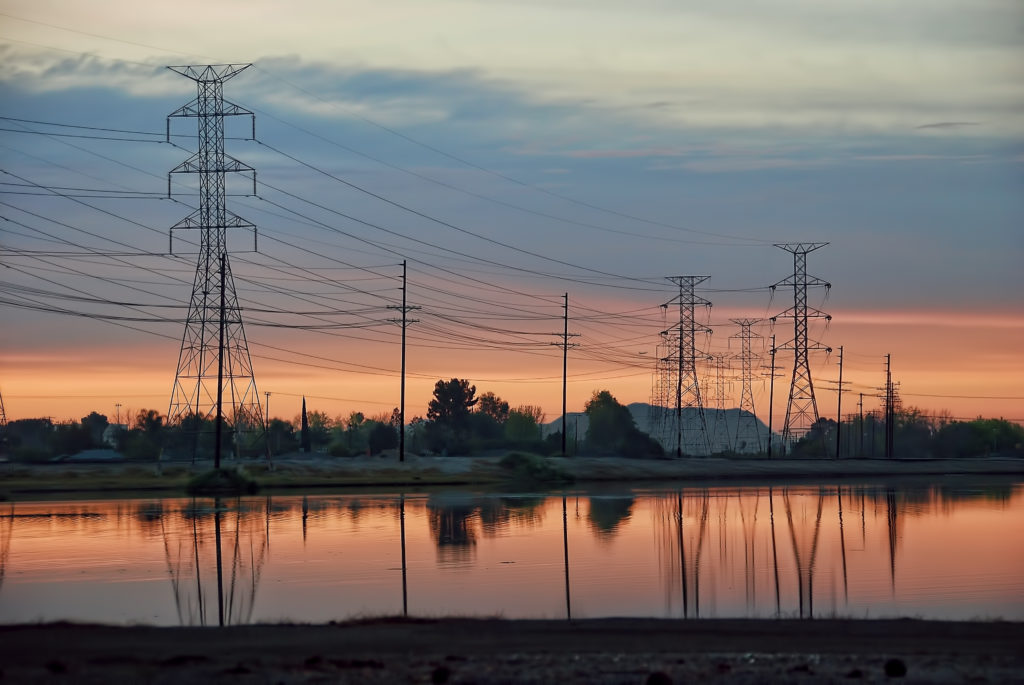
Making an economic case for local water in L.A. County
New research shows financial benefits of using sources such as groundwater
Los Angeles voters have a history of putting their money where their mouths are, taxing themselves to address social problems and improve communities.
In 2016 alone, voters approved measures aimed at homelessness, public transportation — even building more public parks. In the 2018 midterm elections, another important issue hits the ballot: the region’s future water supply.
According to UCLA-led research published today, building infrastructure to bolster local water resources isn’t just good for people and the environment — it also makes economic sense.
“We can do a lot locally that we have not really allowed ourselves to contemplate,” said Stephanie Pincetl, one of the paper’s authors and director of the California Center for Sustainable Communities at UCLA. “The cost effectiveness is there. That’s an important realization that enables us to really move forward with a different set of priorities.”
The study, which collected and standardized costs of water sources from around Los Angeles County, represents the most comprehensive and transparent effort to model local and imported sources of water supply.
Los Angeles currently gets 60 percent of its water from places hundreds of miles away, such as the Colorado River and the Sacramento-San Joaquin Delta. Doing so requires a lot of energy and depletes ecosystems. It also costs local agencies about $1,000 per acre-foot, the paper notes. (An acre-foot equals about 325,000 gallons — enough to fill a football field with a foot of water.)
The price of imported water has been steadily increasing. Today’s research, published in Nature Sustainability, shows how many currently existing local sources are less expensive. Making L.A. County’s water supply more resilient will require major investments in infrastructure. Those financial decisions should emphasize the potential long-term savings of better utilizing local sources, said Erik Porse, a UCLA researcher and lead author of the study.
“We have a lot of existing, alternative supplies around the L.A. Basin — such as stormwater capture, groundwater pumping and recycled water use — and many are significantly cheaper,” Porse said.
The paper’s cost estimates drew a line between existing and new sources.
Collecting stormwater and pumping it from already-built large spreading basins is one of the least expensive methods, costing as little as $250 per acre-foot. More expensive alternatives for stormwater include newer, smaller-scale infrastructure, which can raise the price to $2,500 or more. Municipalities are now weighing these costs against benefits such as reducing pollution in watersheds, Porse said.
Alternatives that include treating and reusing water are also cost-competitive, and new technology could make recycled water an even better deal in the future. For now, some communities get recycled water for outdoor irrigation for as little as $400 per acre-foot, while facilities that treat water using newer methods can raise the cost to $2,000 per acre-foot.
One method that doesn’t require heavy investment, the paper noted, is urban conservation. Responding to shortages caused by the recent multi-year drought, Californians were able to cut residential use by 24.5 percent between June 2015 and April 2016.
In a place like L.A. County, which has more than 100 agencies serving 10 million people, understanding water supply economics poses a challenge.
“The management, governance and economics of water are about as complex as systems can get,” said Tom Torgersen, a program director with the National Science Foundation, which funded the research. Only by understanding that complex system can decision-makers evaluate options to see what might work, he added.
Today’s paper is the latest in a series of publications that closely examines L.A. County’s water supply. A previous study showed that the county could reduce reliance on imported water by 50 percent using currently planned infrastructure and improved conservation efforts.
The research group leading the effort, which includes UCLA associate vice chancellor for environment and sustainability Mark Gold, also laid out a path to go even further. “It will take a lot of work and financial resources to transform our water management system,” Gold noted, “but this research demonstrates that 100 percent local water is possible by 2050.”
Determining a pathway to 100 percent local water is part of UCLA’s Sustainable LA Grand Challenge, which uses research to inform public policy and individual conservation. It also factors into Los Angeles Mayor Eric Garcetti’s Sustainable City pLAn, which set a goal of getting the city to 50 percent local water by 2035.
One of the biggest hurdles remains funding major new infrastructure, including water recycling facilities, underground basins and spreading grounds, which collect rainfall and allow it to percolate into groundwater supply. While places including the cities of Los Angeles and Santa Monica have bought in such investments, not everyone is on board yet, Porse said.
In the end, necessity may be the mother of invention. UCLA research shows that the Sierra Nevada snowpack — a natural reservoir that provides 60 percent of the state’s water supply — is already down 25 percent due to global warming, which is causing more precipitation to fall as rain. By the end of the current century, it could be reduced an additional 85 percent. Combined with a projected increase in extreme wet and dry weather, the entire state may be forced to rethink its water supply and flood control systems, researchers say.
Ballot measures offer the best hope for a solution, Gold said. Voters will get a chance to weigh in on several water-focused items this year: Proposition 68, on the ballot in June, would allow the state to sell bonds to raise money for parks and water projects. On April 26, a $9 billion bond measure was certified for the November ballot after collecting more than 600,000 signatures.
Most importantly, Gold said, the L.A. County Board of Supervisors — led by Sheila Kuehl and Hilda Solis — introduced the “Safe Clean Water L.A.” ballot measure. If approved, it would levy a property tax to generate about $300 million a year. This would enable the county and its 88 cities to create a range of local and regional projects to clean polluted waterways; absorb and channel more stormwater into groundwater; make communities more sustainable and cooler in temperature; conserve more water; and build systems to collect and store stormwater.
“Property taxes are a tough sell, but we’ve seen in the past couple of years that we need to modernize our infrastructure,” Gold said. “We’ve seen it with Measure R and Measure M on the transportation side, Measure A for parks, and with measures to provide funding to build housing for the homeless. Safe Clean Water L.A. is a measure whose time has come.”
IMAGE: Pacoima Spreading Grounds. | Photo by Chris Yarzab via Flickr.
Published:


